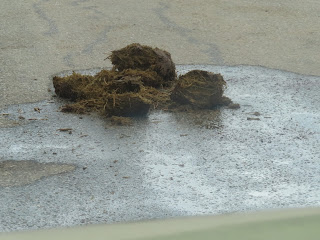Originally built in 1849, this lighthouse was placed here due to the large number of reefs found in this area. The word Recife came from the Portuguese word for reefs. Many ships over the centuries had run aground on these reefs. It is 28 meters tall and the lights can be seen 29 nautical miles out to sea. There is a fog horn and a radio beacon as well. The lighthouse is no longer manned and the buildings are fenced off. It is part of a large nature reserve with 900 acres of protected sand dunes. The dunes are tall and are covered with a thick layer of vegetation. There are 9 km of trails and wooden walkways for folks to walk on. In addition there are places to park and to grill food. There is also a series of cabins right on the water for holiday makers called the Pine Lodge Resort. We barged in on two different photoshoots! Six inch heels and evening dresses in the sand dunes make for a weird contrast.
The dunes were 30 feet tall in the tallest spots
The walkways can be seen to the right and the left
Lots of prohibited activities. So the motorcycle riding dog with scuba tanks is not allowed to shoot at tents around the campfire!
The radio tower is very tall
These fishermen were pretty far out into the water
Girls gotta get those high heels on
How does this picture frame thing work anyway?
That's better
The remains of a military observation post built in 1851 is visible to the left
A closer look at the observation tower
It is all locked up and no one is allowed inside
One photoshoot still going on and one photoshoot is over
Soon this building will be buried in sand
The dunes are tall indeed
Nice of the folks to put a label on it
Look what the tide chased in
A big egret or heron flew overhead as we were leaving
































































